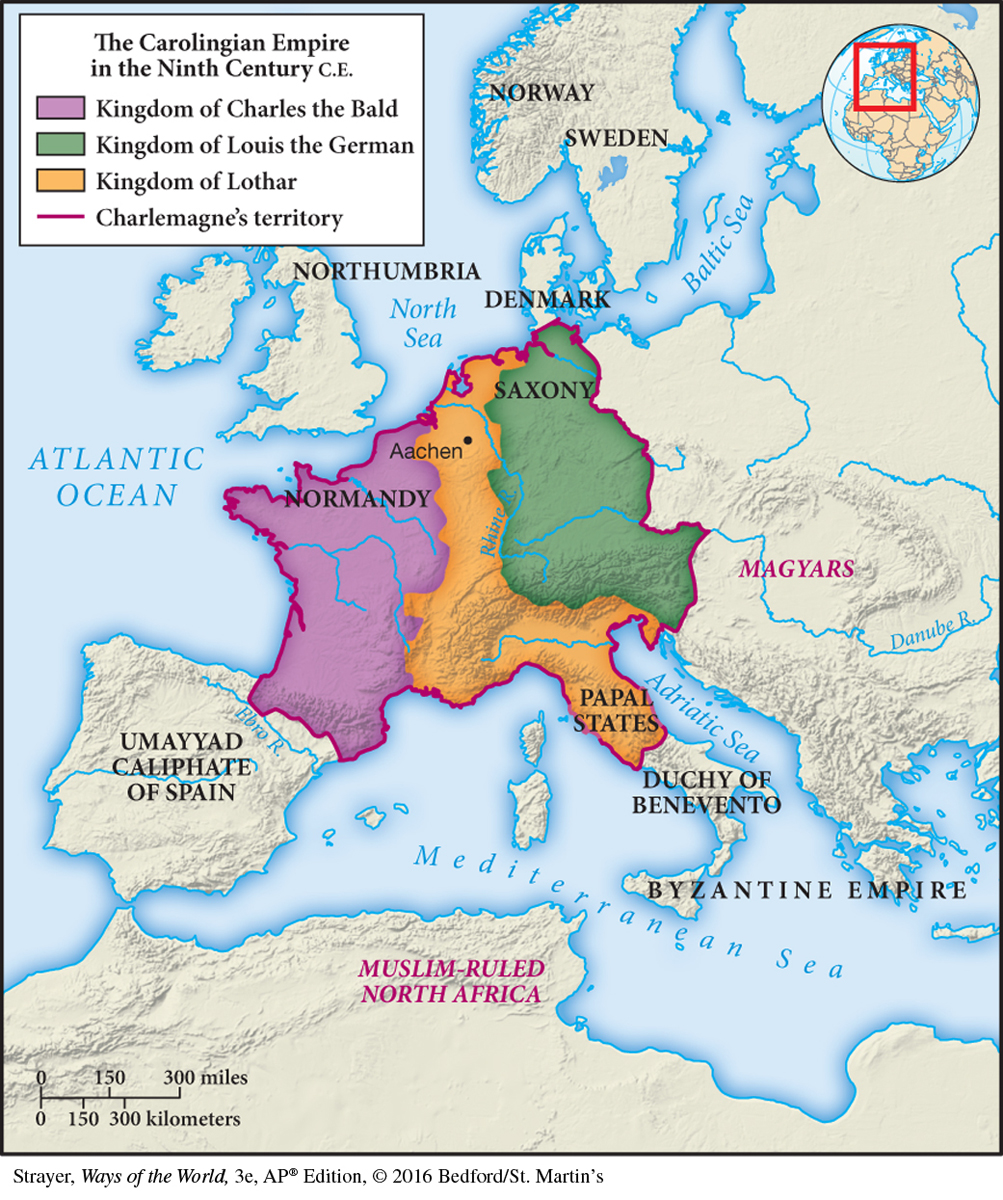Political Life in Western Europe
AP® EXAM TIP
You must know the effects of the fall of the Roman Empire on the Mediterranean region.
AP® EXAM TIP
As you develop your skills in writing comparison essays, study similarities in political fragmentation between South Asia and Western Europe. Look back at Chapter 3.
In the early centuries of this era, history must have seemed more significant than geography, for the Roman Empire, long a fixture of the western Mediterranean region, was gone. The traditional date marking the collapse of the empire is 476, when the German general Odoacer overthrew the last Roman emperor in the West. In itself not very important, this event has come to symbolize a major turning point in the West, for much that had characterized Roman civilization also weakened, declined, or disappeared in the several centuries before and after 476. Any semblance of large-
Guided Reading Question
▪CHANGE
What replaced the Roman order in Western Europe?
Yet much that was classical or Roman persisted, even as a new order emerged in Europe. On the political front, a series of regional kingdoms — led by Visigoths in Spain, Franks in France, Lombards in Italy, and Angles and Saxons in England — arose to replace Roman authority. But many of these Germanic peoples, originally organized in small kinship-

The prestige of things Roman remained high, even after the empire itself had collapsed. Now as leaders of their own kingdoms, the Germanic rulers actively embraced written Roman law, using fines and penalties to provide order and justice in their new states in place of feuds and vendettas. One Visigoth ruler named Athaulf (r. 410–415), who had married a Roman noblewoman, gave voice to the continuing attraction of Roman culture and its empire:
At first I wanted to erase the Roman name and convert all Roman territory into a Gothic empire…. But long experience has taught me that … without law a state is not a state. Therefore I have more prudently chosen the different glory of reviving the Roman name with Gothic vigour, and I hope to be acknowledged by posterity as the initiator of a Roman restoration.14
AP® EXAM TIP
Be able to cite several examples of political division and unity throughout European history.
Several of the larger, though relatively short-lived, Germanic kingdoms also had aspirations to re-create something of the unity of the Roman Empire. Charlemagne (SHAHR-leh-mane) (r. 768–814), ruler of the Carolingian Empire, occupying what is now France, Belgium, the Netherlands, and parts of Germany and Italy, erected an embryonic imperial bureaucracy, standardized weights and measures, and began to act like an imperial ruler. On Christmas Day of the year 800, he was crowned as a new Roman emperor by the pope, although his realm splintered shortly after his death (see Map 10.2). Later Otto I of Saxony (r. 936–973) gathered much of Germany under his control, saw himself as renewing Roman rule, and was likewise invested with the title of emperor by the pope. Otto’s realm, subsequently known as the Holy Roman Empire, was largely limited to Germany and soon proved little more than a collection of quarreling principalities. Though unsuccessful in reviving anything approaching Roman imperial authority, these efforts testify to the continuing appeal of the classical world, even as a new political system of rival kingdoms blended Roman and Germanic elements.